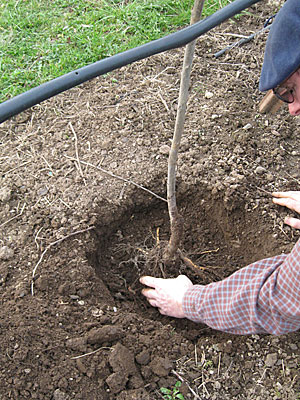Growing Fruit Trees
Welcome to our guide to growing fruit trees! We are happy to share our decades of experience with you all. Whether you are completely new to gardening or a seasoned grower, this guide goes over everything you need to know to grow fruit trees in our PNW climate. Just getting started? Check out our 101 guide below. Then, browse the side menu and dive into the principles of orchard management and learn more about each tree type.
Fruit Trees 101
Where to Plant
Fruit trees do best in full sun with well-drained soil. You can create a mound to plant on if your soil doesn’t drain well. Make sure your site has enough room for the mature size of the tree and enough space around it for pruning and harvest.
Choosing Varieties
If you ask nursery staff their favorite variety, you will likely get a different answer every time. We sell a wide range of varieties with various purposes. A bittersweet cider apple will be used very differently than a sweet sauce apple, and, trust us, the difference is noteworthy! We recommend picking varieties based on how you plan to use them. Our varietal descriptions include notes on flavor and best uses; find what “speaks” to you!
Pollination Requirements
Some fruit varieties are self-fertile and will set fruit without a pollinizer, but many will need the pollen of a different variety’s genetics to set fruit. The pollinizer needs to be the same type of fruit (apples only pollinate apples, pears only pollinate pears), and the flowers need to have an overlap in bloom time. Refer to our pollination charts on each species page for compatibility. Plant pollinizers within 100’ of each other for best pollination.
What are Rootstocks and How to Pick
All of the fruit trees we sell are grafted, which means a cutting from that variety is joined/grafted on to a rootstock – a stem and root ball from another variety. Why go through all the extra work? First of all, grafting is the quickest way to grow new fruit trees! Most cannot be easily propagated by seed. And, once grafted, rootstocks give characteristics to the whole plant that that the variety may not have otherwise, including mature size, tolerance to soil types, and disease resistance. Rootstocks vary from species to species; detailed rootstock information can be found on the growing tips page for each type of tree. In general, dwarf rootstocks will grow more compact trees that benefit from being staked; semi-dwarf rootstocks will grow more vigorous trees with well-anchored roots. Dwarf rootstocks are recommended in small spaces and for high-density training practices like espalier.
Importance of Pruning
All bare root fruit trees should be pruned their first year. Bare root trees have had a portion of their root system cut off during the field digging process. Therefore, the branches should be pruned to compensate for the lack of roots. Also, this initial pruning will set the foundation for how you” train the tree long-term. Visit our species-specific pages for pruning and training instructions.
Fertility
Young fruit trees benefit from both lime and fertilizer. Lime will slowly raise the pH of our naturally acidic soils; get a soil test to determine the application rate. Fertilizer up to three times (less for heavy clay soils) around the spring holidays – St. Patrick’s Day (dormancy break), Memorial Day (actively growing), and 4th of July (fruit set). Do not fertilize earlier or later as winter applications leach out of the soil or late summer applications encourage excessive growth that may not harden off before winter.
Fruit Thinning
All fruit should be removed the first year. This will force the tree to put its energy into its roots and shoots instead and help it get established. Heavy thinning is recommended in year two and a regular thinning program can begin in year three. (Thinning protocol depends on the type of fruit tree and by variety.
Watering & Weeding
On average young fruit trees need about 1″ of water (more or less depending on soil type, tree’s establishment, and rootstock) per week during the growing season. Keep the 3′-4′ area (“drip line”) surrounding the tree clear of sod and weeds throughout the year.
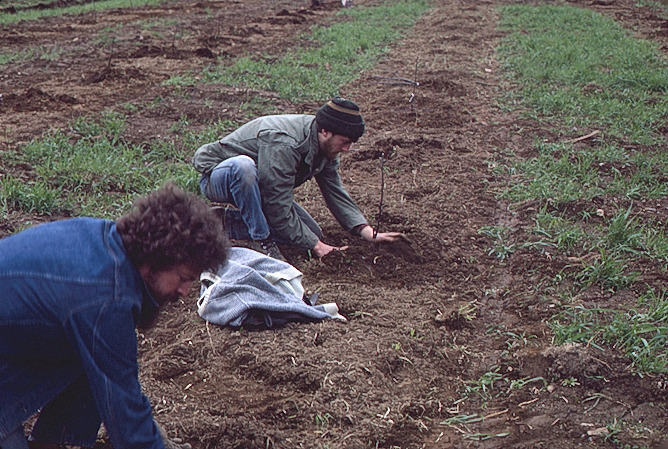
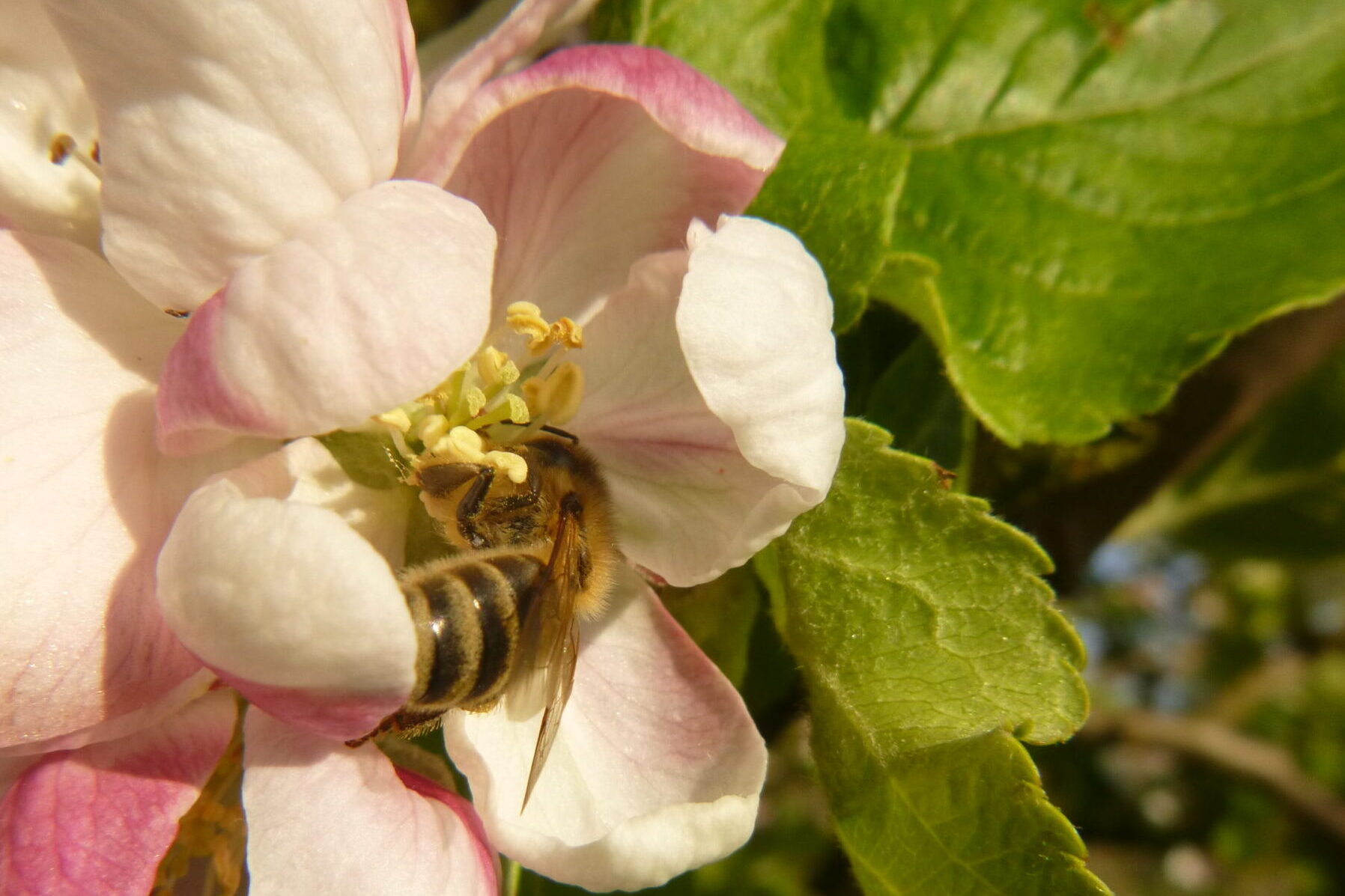
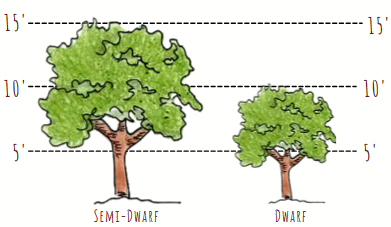
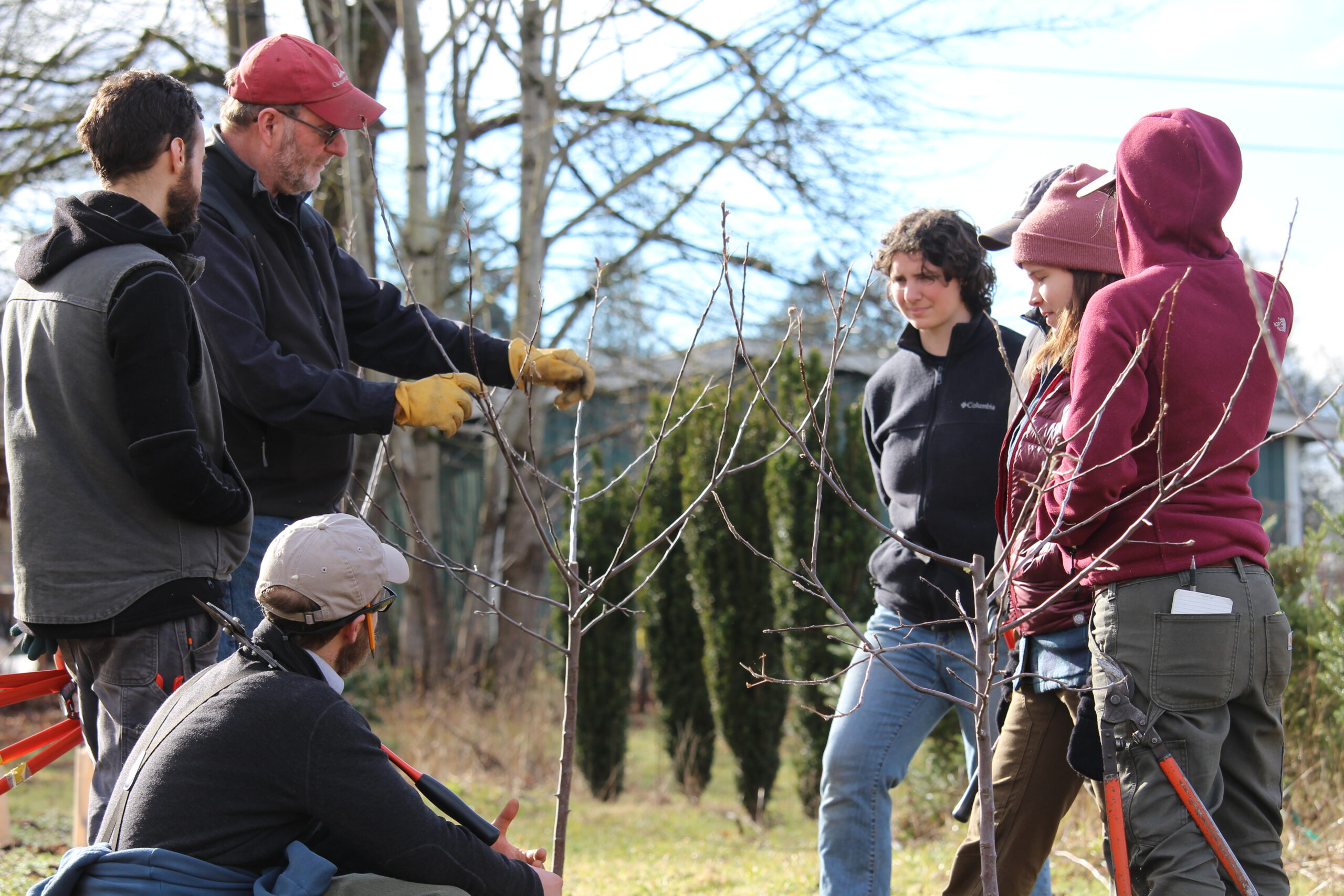
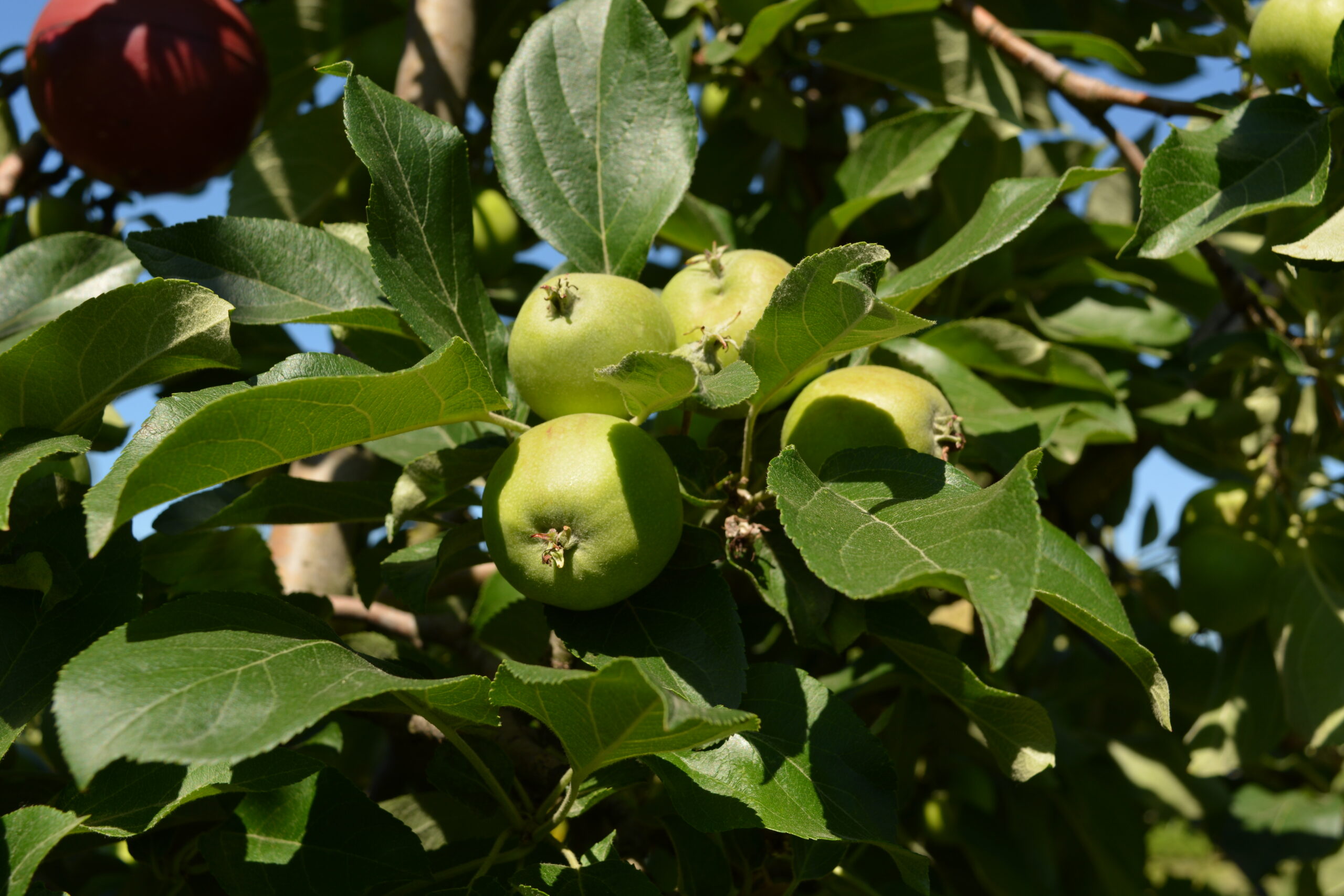
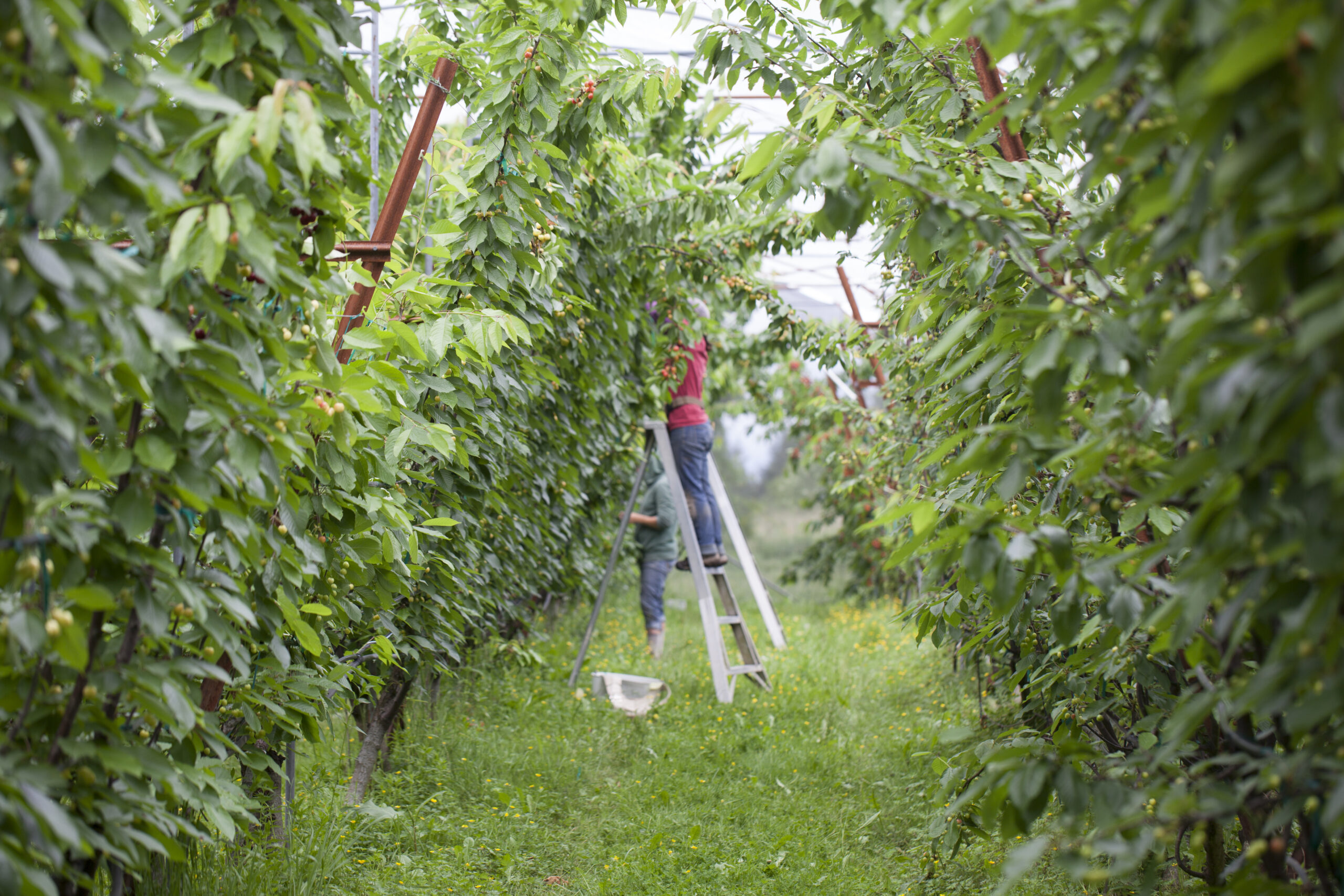
Planting Instructions
1. Clear the planting area of vegetation 3′-4′ in diameter.
2. Dig a hole twice as wide as the pot or root ball and just over half as deep. Score the sides with a shovel to make sure the roots can penetrate through the outside of the hole (especially important in heavy soil.)
3. If you’re using a stake, install it so that 1/3 to ¼ of the length is buried and 6″ of space is left between the stake and the tree trunk. We recommend round, rot resistant stakes (so as the tree grows, edges do not cut into the tree) that are 8′ tall: 2.5′-3′ will be buried, and you will be left with 5′ to train the tree. When done planting, tie the tree to the stake with stretch tie. The tree should be parallel to the stake and be able to sway somewhat. Dwarf varieties will need permanent staking. Semi-dwarf varieties don’t need permanent staking but benefit the first few years while their roots are anchoring.
4. Build a mound in the bottom of the hole and spread the roots laterally over it. Make sure the root collar (where the roots transition to trunk) will be level with the finished soil grade and the graft union will be at least 3″-6″ above it.
5. Firmly pack soil around the roots to prevent air pockets and mound the soil slightly higher than ground level to drain water away from the base of the trunk. If mulching, leave the space right next to the trunk clear to prevent collar or crown rot. Ideal fruit tree mulches are hard wood (not coniferous mulch) but beware that mulch can attract overwintering rodents.
